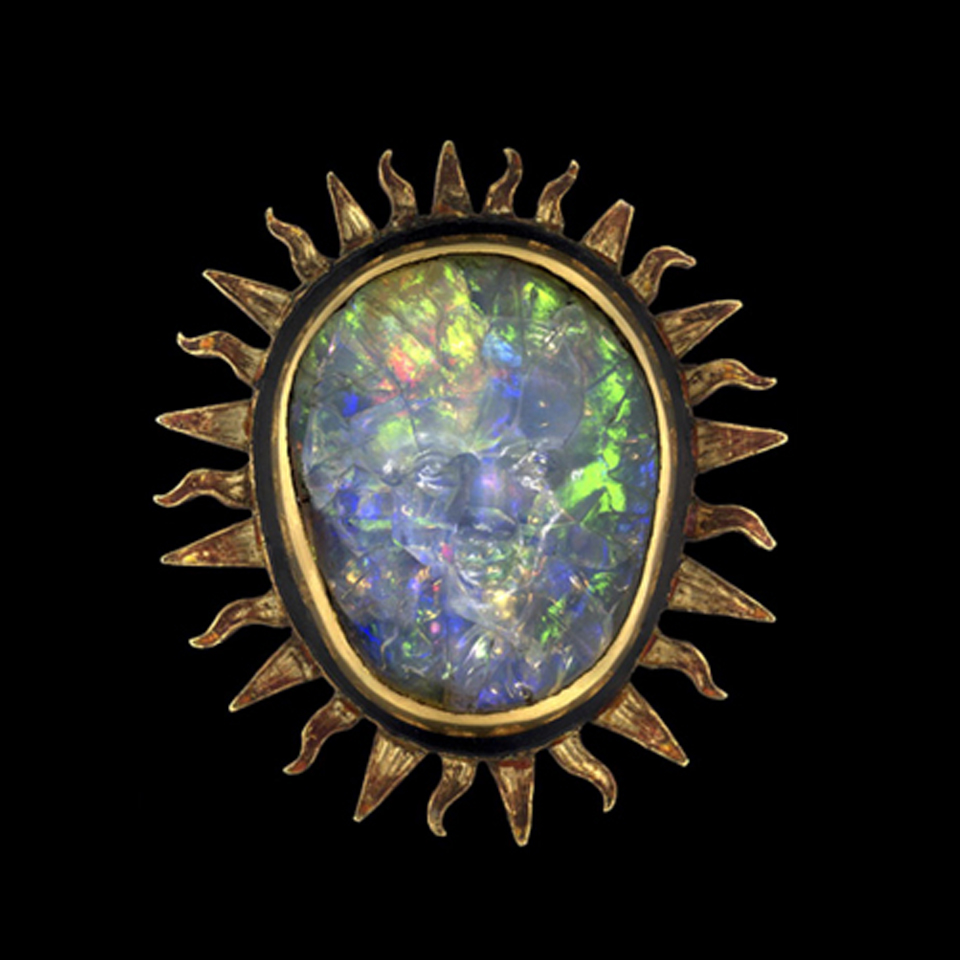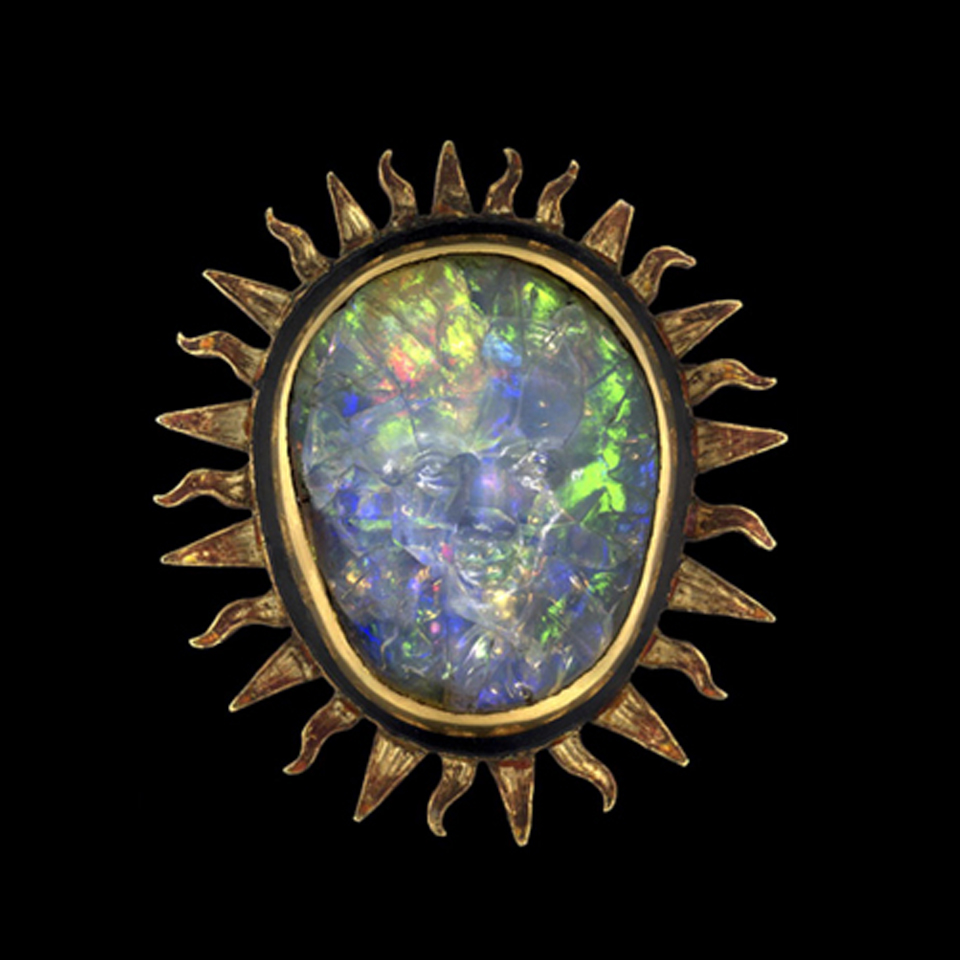There are three main types of opal: white, black and fire. Some precious opals emit spectral colors from every angle, each one quickly flashing and glowing as bright as the next. This phenomenon is called play-of-color and has enchanted people throughout the ages.
Ancient Romans believed opal was precious and powerful. Opal takes its name from the Sanskrit “upala,” which means “precious stone” or “gem.” Arabic legends say opal fell from the heavens in flashes of lightning. Opal was also once thought to preserve the color of blonde hair.
A gemstone with this unique play-of-color characteristic is sure to be found in equally unique – and famous – pieces of jewelry. So, meet the famed Sun-god Opal – you certainly won’t find him amid the standard round brilliant, emerald cut, and other faceted stones of your jewelry box.
Read on for the history and lore behind this one-of-a-kind ancient opal gemstone.
The Sun-god Opal
A carved precious white opal, the Sun-god Opal is one of the original stones in the Field Museum’s gem collection. The piece itself, though, is shrouded in mystery.

The Sun-god Opal From “Gems and Gemstones: Timeless Natural Beauty of the Mineral World” by Lance Grande and Allison Augustyn, 2009, University of Chicago Press.
Believed to have been mined in Mexico by the Aztecs in the 16th century, this 35 carat precious white opal has a particularly singular quality. The top of the cabochon is carved into the shape of a human face surrounded by flames, which is most likely how it got its name.
Unfortunately, there is little information about the origins of the carving, so we don’t know whether it was created for religious purposes or represents an ancient cutter’s spark of imagination.
What is known is that the Sun-god Opal somehow appeared in the Middle East, mounted in a gold brooch. It was on display in a Persian temple for several centuries.
So how did the Sun-god Opal get to the Field Museum in the United States?
Philip Hope, a notable gem collector, acquired the famous white opal in the mid-19th century and the piece was added to the Museum’s gem collection before the opening of the Field Columbian Museum on June 2, 1894. The Sun-god Opal has been a part of the Museum’s collection ever since.
Gem enthusiasts may know that when precious opals have play-of-color, they are cut into irregular shapes and cabochons to best display the effect. The craftsman who carved the Sun-god Opal certainly must have had a deep appreciation for his material and knew how to portray opal’s dazzling display to great effect.
Precious Opal’s Play-of-Color
Precious opal has been revered for centuries as a gemstone that possesses unique optical characteristics – and we’re not just referring to the Sun-god Opal. The background color of precious opal comes in black, gray, white, green, orange, red and fire (an orange-red color).
Play-of-color spans the color spectrum, putting on a light show that’s better seen than described. Words like galaxies, fireworks, lightning, kaleidoscopic, and flickers of a burning light, only approximate the characteristic that is unique to opal.
The flashing rainbow colors, or play-of-color, are actually billions of uniform, submicroscopic silica spheres that are stacked in a grid-like pattern. This internal crystal construction is what differentiates precious opal from any other gemstone.
No two opals are exactly alike – further demonstrating opal’s distinctive character. Take a look at our latest opal videos to learn more about this captivating gemstone: Why We Love Opal and Opal Buyer’s Guide.
SOURCE:http://4cs.gia.edu/en-us/blog/famous-birthstone-octobers-sun-god-opal/
